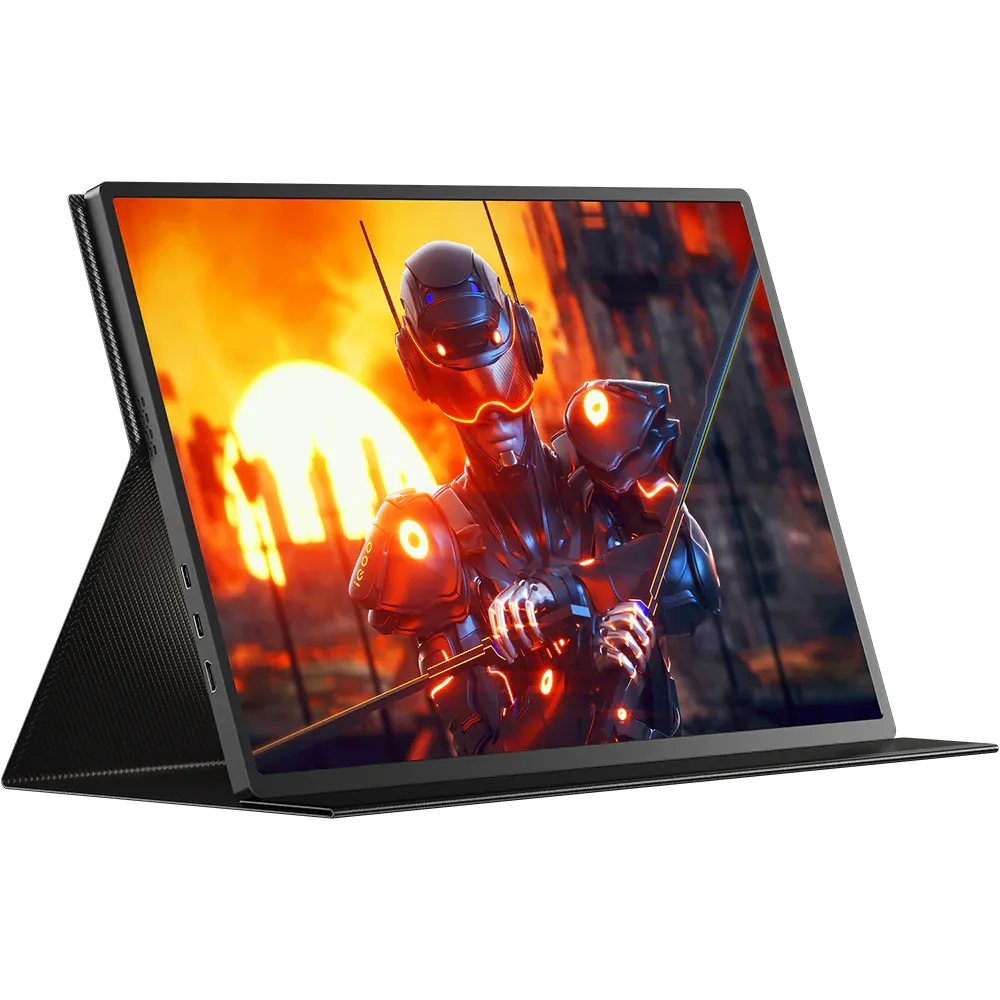How weight and thickness affect portability in external monitors

It’s no surprise that the weight and thickness of a monitor can determine its portability. Portable monitors are becoming commonplace in our lives, along with phones and tablets. Portable monitors from Samsung, UPERFECT, HP, AOC, and other brands are selling fast.
However, when purchasing a portable monitor for laptop, most people care about size and resolution. Those are the main characteristics that come to mind when purchasing a portable monitor for laptop. However, weight and thickness are the two physical properties of a monitor that matter most. So, let’s look at why weight and thickness matter, and how they can make a portable monitor for laptop different from others.
Portability: A Combination of Design, Ergonomics, and Experience
First things first, what does portable mean? You can take it with you. That’s it. As a designer, computer scientist, and coder, how a monitor looks is not as important as the monitor’s physical properties. Let’s take a look at why weight and thickness matter.
Weight and its effects on portability
1. Carrying it around
Having a portable monitor for laptop to carry around is a hassle. As we become busier and busier, we also want things to be light, whether you’re a commuter or a frequent traveler. If you’re a professional working on a portable monitor for laptop, weight is everything.
Specifically, a portable monitor for laptop that is light is the deciding factor. A portable monitor for laptop under 1.5 kg is probably thin enough to fit in a backpack or laptop bag.
If you’re a business traveler or commuter, a heavy portable monitor for laptop is a burden. Even if you don’t need to carry your portable monitor for laptop, weight can make you less inclined to carry it around.
2. Traveling
As a traveler or commuter, you have to be careful about what you bring with you. Not only do you have to worry about airline restrictions on how much you can take with you, but your luggage size is also limited. The weight of your laptop, tablet, portable monitor for laptop, and other things has to be minimized. As a result, a heavy portable monitor for laptop may make you less inclined to bring it with you. For a portable monitor for laptop, weight is a factor in how much you take with you.
On the other hand, a light portable monitor for laptop means you’re not carrying anything extra on your back. A light portable monitor for laptop means you’re less inclined to be frustrated when traveling, and your portable monitor for laptop will not be damaged when you carry it on and off your luggage.
Weight vs. Thickness
So, we’ve already established that weight is important, but what about thickness? In fact, even a light portable monitor for laptop can be affected by thickness. Here’s how weight and thickness are related:
1. Storage and Packed Size
When you’re a traveler or commuter, you have to bring around a number of things. In fact, even having a portable monitor for laptop that is too heavy can be problematic. A light portable monitor for laptop means you can carry it around, but if your portable monitor for laptop is too heavy, it can be difficult to store. However, if your portable monitor for laptop is too thick, you won’t be able to fit it in the same slot as your laptop.
2. Setup and Workspace
Another issue is having a portable monitor for laptop that is too heavy and too thick to fit in a small space. When you’re on a plane, in a co-working space, or in a hotel, a thin portable monitor for laptop can be a lifesaver. Even if your portable monitor for laptop folds flat, it can be hard to unfold it and set it up. A portable monitor for laptop that is thin means you can set it up without taking up any desk space.
3. Portability vs. Durability
Another factor is that a thin portable monitor for laptop is less durable. However, most portable monitor brands have aluminum alloy and durable cases to make them light. In fact, these monitors can often strike a balance between durability and portability.

A Quick Look at Popular Portable Monitors
Here’s a quick look at some popular portable monitors and how they compare in terms of weight and thickness:
| Monitor Size | Average Weight | Average Thickness | Portability Rating |
|---|---|---|---|
| 13-14 inches | 1.3–2.0 lbs | 0.2–0.4 inches | Excellent |
| 15-16 inches | 1.8–2.6 lbs | 0.3–0.5 inches | Very Good |
| 17-18 inches | 2.5–3.5 lbs | 0.4–0.7 inches | Moderate |
| 24 inches | 3.5–5.0 lbs | 0.5–1.0 inches | Portable (if well-designed) |
You’ll notice that a 24 inch portable monitor is not too heavy. In fact, a 24 inch portable monitor is portable, even though it’s large. If you’re looking for a 24 inch portable monitor, UPERFECT portable monitors strike a balance of size and portability that makes them ideal for travelers.
Who Needs a Portable Monitor?
1. Business Travelers
Business travelers need to take their setup with them wherever they go. Whether you’re creating a presentation, working in a hotel room, or spending the day in an office, having a portable monitor for laptop can allow you to work wherever you are. A portable monitor for laptop that is too heavy can be an annoyance for commuters.
2. Remote and Hybrid Workers
Remote and hybrid workers need to commute between their home office and office every day. As a result, a portable monitor for laptop that is light and easy to carry around can make the transition between work environments much easier.
3. Designers and Video Editors
Designers and video editors need to work creatively on their laptops. As a result, they need to work wherever they are. Having a bright, large-screen portable monitor for laptop can help you be creative and not be constrained by your environment.
4. Students and Researchers
Students and researchers need to work in a variety of environments, from libraries to dorm rooms to classrooms. Having a portable monitor that is too heavy can make it difficult to use it in different environments. A portable monitor for laptop can allow you to work wherever you are, and you can take it with you wherever you go.
Monitor specs are not everything
However, while weight and thickness are important physical characteristics that make a monitor portable, there are other things to consider:
1. Bezel width
A thin bezel makes a monitor look thinner, and it can also help cut down on visual noise.
2. Kickstand design
Having a kickstand integrated into the design can add value without adding weight.
3. Port placement
Having a single-sided connection port and a central placement of the port can help with charging and cable management.
4. Smart cover design
Having a foldable smart cover can double as a kickstand and protect your monitor when traveling.
The best portable monitor brands can balance portability and durability. Having a thin, light portable monitor for laptop is key to being able to take it around and use it.
A Balancing Act of Portability and Performance
We often focus on portable monitor specs, and often want to get the lightest, thinnest monitor possible. As a user, there are a few other things to keep in mind:
1. Battery life
A portable monitor that runs on USB-C power is not as portable as one that has its own battery.
2. Brightness and color
If your portable monitor for laptop is thin, it can run at a lower brightness to keep the heat down.
3. Refresh rate and resolution
If you’re a gamer or video editor, you’ll want higher refresh rates and resolutions. However, these tend to add weight and thickness.
In short, the best portable monitor strikes a balance between weight and thickness without sacrificing the experience.
Ways to Increase the Portability of Your Monitor
With this in mind, here are a few tips to make your portable monitor for laptop more portable:
1. Get a case
Protect your monitor when traveling and in your bag with a dedicated case.
2. Get a USB-C monitor
A portable monitor for laptop that works on USB-C can easily be plugged in and unplugged with no problems.
3. Get a multipurpose stand
A portable monitor for laptop case can double as a stand, and a multipurpose stand that folds and unfolds can take up less space.
4. Check airline size restrictions
Your portable monitor for laptop should be the size restrictions for carry-on luggage.
5. Take advantage of wireless technology
A portable monitor for laptop with wireless display technology can be set up without any cords.

Conclusion
Weight and thickness are two important physical characteristics of a monitor, but they are often ignored in favor of flashier specs and features. As remote and hybrid work increases, people need to have monitors that balance portability and performance.